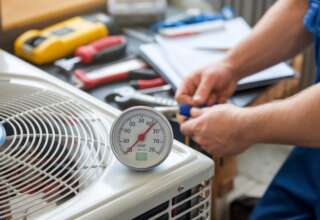Modern homes have circuit breakers instead of fuses. These are an important safety feature as a circuit breaker can trip in a fraction of a second, effectively cutting the power to a circuit and potentially saving your life.
Considering there are approximately 20 deaths per year from electrical incidents and many more injuries, it’s a wise idea to be know how to check a circuit breaker.
Of course, if you’re not happy following these instructions or have concerns regarding doing electrical work then you should contact a local and reputable electrician Sydney.
Testing With A Multimeter
The most obvious sign that there could be something wrong with your circuit breaker is when it keeps tripping. Before you assume a breaker fault you should verify that the circuit is not being overloaded or a specific item is causing the issue.
Do this by unplugging everything on the circuit. Plug them all back in one at a time. If it trips repeat the process and plug everything in again, but in a different order. If it trips again on the same appliance you may have a problem with the appliance. If it just trips then you may be overloading the circuit or have a bad breaker.
To test your breaker with a multimeter turn off everything on the circuit and unplug if possible.
You can then access the panel by unscrewing the breaker box cover.
Now turn on your multimeter and make sure the black wire is plugged into the common port and the red wire into the V or horseshoe port.
Now place the red probe against the screw on the breaker, where power exists. Touch the black probe to the neutral bar. You can now compare the reading on your meter with what it should be. That means it should be around 230v. But, if it’s not then you have a faulty breaker.
You’ll need to shut all the power off to remove the breaker and replace it with a new one.
A voltage tester can also be used to test the breaker.
Power Off
Another way of testing your breaker is to unplug everything from the circuit and then turn the breaker on. If you have a reset or test switch you should press it. If it resets but immediately trips again then you have an issue with the breaker.
Fixing It
As mentioned you can shut the power off at the mains. This will allow you to unscrew the wires on the breaker. You’ll then find a small tab that can be pulled upward, allowing you to tilt the breaker out of the circuit and remove it. Replacing it is simply a reversal of this process.
Make sure all cables are properly secured before you turn the power back on and check the breaker no longer trips.
As always, if you have any doubts you should get the professionals to help. They work with electricity every day.










